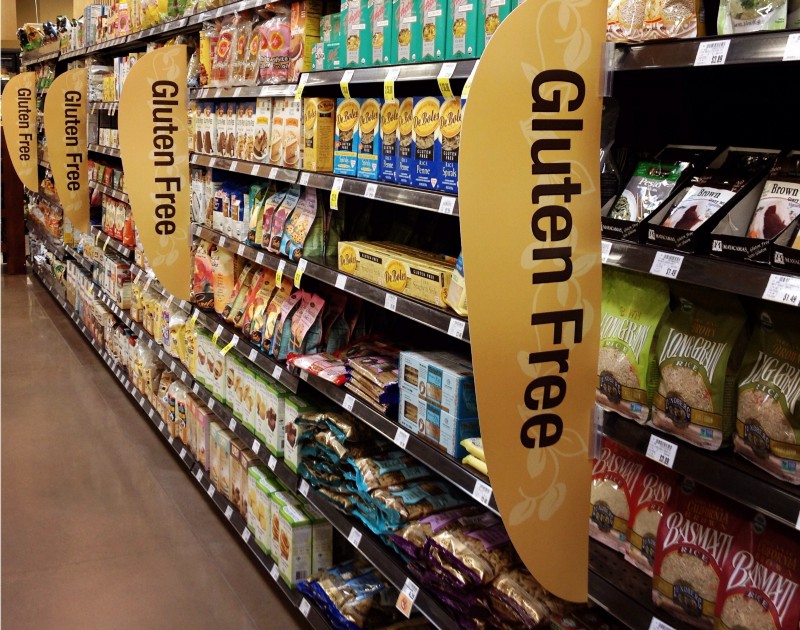

As a vegetarian, I was pretty happy about recent headlines comparing smoking to bacon, in terms of cancer risk. But the scientist in me wasn’t so happy about how the world’s media covered the announcement. Just because bacon and other processed or cured meats have been shown to cause cancer, it doesn’t mean that eating them is as risky as smoking, drinking, or snorting asbestos.
Basically, it comes down to a question of quantity. Cancer Research UK did a calculation: If we chopped all such meat out of our diets, it would prevent only 8,800 cases of cancer each year in Britain. Compare that to the 64,500 fewer cancer diagnoses in the country if smoking were banned.
But as much as I miss eating bacon and salami, this isn’t the first time we’ve gotten things really wrong when it comes to what’s safe to eat. History is littered with false food scares and conflicting evidence–some from the scientific community, others peddled by amateur nutritionists, “wellness experts,” or even rival food industries. Here are five examples of our food failures since the dawn of the industrial revolution.

1. Eggs
The Japanese eat more eggs than anyone else in the world: a whopping 328 per person each year. But they have very low rates of heart disease–a fact that would have confused nutritionists in the 1970s and 80s, who were positive that the high cholesterol content in eggs was a major cause of heart disease.
A large egg yolk contains 210 mg of cholesterol, and until pretty recently the American Heart Association recommended limiting cholesterol to 300 mg per day. We’ve since learned that eggs don’t increase the amount of cholesterol in our blood very much at all. Instead, it turns out that saturated fat is much more likely to raise cholesterol levels in our blood than the actual cholesterol we consume.
It seems that eggs are pretty great for you as long as you’re not trying to emulate Gaston (of Beauty and the Beast fame). They supply all essential amino acids for humans, and provide significant amounts of our daily requirements for vitamin A, riboflavin, pantothenic acid, vitamin B12, choline, and phosphorus. They’re also one of the few foods that naturally contain vitamin D, and can be a good source of omega-3 fatty acids.


2. Milk
Despite the significant health benefits of pasteurizing milk, it wasn’t until about 40 years after its discovery that the United States widely adopted the practice. Why? Entrenched corporate interests, of course.
Humans have been drinking cow’s milk since neolithic times, but for most of that duration its safety record has been less than stellar. During the 1800s, people often became ill and died from milk-borne bacterial infections, all before 1864 when Louis Pasteur discovered the process of pasteurization–where milk (and other liquids) is heated to kill off pathogenic microbes.
In the United States, however, the technology was greeted with considerable skepticism. The dairy industry, citing the added cost of the process, fought any attempts to make it compulsory. Meanwhile, the public saw pasteurized milk as less “pure” and “natural,” and the few dairies that did pasteurize their milk (mostly to increase shelf life) were forced to do so in secret.
Much of the technology’s eventual acceptance can be credited to Teddy Roosevelt, who in 1907 ordered that the Public Health Service figure out whether milk was actually unsafe. Its report, published in 1908, said pasteurization didn’t affect the taste, quality, nutrition, or digestibility of milk but did “prevent much sickness and save many lives.” After several court battles and a major typhoid epidemic in 1913, pasteurization became mandatory in New York in 1914, and within three years, the 50 largest cities in the States all required the process.

3. Fish
No cases of mercury toxicity from fish consumption have ever been reported in the United States, but fears over the safety of seafood have long dogged the industry. The cause can be traced back to the Japanese city of Minamata between 1932 and 1968, where a chemical company pumped huge amounts of effluent containing mercury into the sea. That mercury accumulated in fish. When the local population ate the fish, the effects were severe. Residents reported numbness in their hands and feet, damage to hearing and speech, and, eventually, insanity, paralysis, comas, and death.
The episode attracted international attention in 1972 when a group of the affected citizens traveled to a UN conference in Stockholm to bring their plight to a global audience. Over the following decades, many governments issued advice to their citizens to limit fish consumption over fears of mercury poisoning. In 2004, the U.S. Food and Drug Administration said that pregnant women should limit fish consumption to no more than 12 ounces.
But the fears are overblown, and fish is seriously good for you. It contains high-quality protein, very little saturated fat, and loads of vitamins, minerals and omega-3 fatty acids that our bodies need. The FDA is now revising its advice. “The real danger in this country, the real concern, is that we’re not eating enough fish,” Dariush Mozaffarian, a Harvard professor of medicine and epidemiology told Time magazine in 2008. “That is very likely increasing our rates of death from heart disease.”

4. Gluten
Slightly less than one percent of people have a condition called Celiac disease, which causes digestive pain when they consume gluten. But about a third of U.S. adults are trying to eliminate it from their diets. What gives?

When you throw in other gluten-related disorders, like wheat allergies and (scientifically questionable) non-celiac gluten sensitivity, the prevalence of people with gluten issues goes up to about five percent of the population. But that still doesn’t account for the massive popularity of eating gluten-free, especially given that Americans are actually eating about half as much wheat as they did in 1870.
The real cause is a handful of books, including Wheat Belly and Grain Brain, that have totally changed public perception–persuading large numbers of people that gluten is effectively a poison. As a result of an industry that’s grown up around scaremongering, sales of gluten-free products will exceed 15 billion dollars by 2016–double the figure five years before–and 2013 saw 200 million specifically gluten-free dishes sold.
That’s great for celiac sufferers–especially kids–who now have far more choice in what they eat than they did just five years ago. Yet there’s little evidence that gluten is harmful to anyone outside of that tiny percentage of the population actually allergic to it. A recent peer-reviewed study of the nutritional contents of gluten-free foods showed they provided no additional health benefits over their gluten-packed equivalents, yet cost about twice as much. Daniel Leffler, the director of clinical research at the Celiac Center in Boston, told Harvard Health: “People who are sensitive to gluten may feel better, but a larger portion will derive no significant benefit from the practice. They’ll simply waste their money, because these products are expensive.”

5. Genetically-Modified Organisms (GMOs)
There is widespread belief among the public that eating GMOs is harmful, but no reports of ill effects have been documented in the human population from genetically modified food. The general scientific consensus is that fare derived from GMOs poses no greater risk to human health than conventional food.
Yet, the safety of genetically modified organisms has been a hugely controversial topic for decades. Public worry about GMOs has prompted many countries around the world to regulate the technology–though in the United States, the FDA makes no distinction between GMO and non-GMO foods and labeling GMO products isn’t required.
In January 2015, 300 researchers signed a letter disputing claims of a scientific consensus around GMOs’ safety. They weren’t arguing that GMOs are unsafe, merely that every crop should be assessed on a case-by-case basis, writing: “The scarcity and contradictory nature of the scientific evidence published to date prevents conclusive claims of safety, or of lack of safety, of GMOs.” Finding real facts, the scientists (and several journalists) conclude, is very difficult amid the hail of propaganda from both sides.
Two things, however, are clear to me about GMOs. The first is that humans have been genetically modifying crops for millennia–the only difference now is that technology allows us to do it faster and more efficiently than ever before. The second is that the potential that GMOs have to offer in addressing world hunger–increasing yields and introducing resistance against pests and diseases–should not be sidelined in favor of the same kind of decades-long superstition that stopped pasteurization from saving lives in 1913. GMO technology is a tool. Let’s use it.


How We Get To Next was a magazine that explored the future of science, technology, and culture from 2014 to 2019. This article is part of our The Future of Food section, which covers new innovations changing everything from farming to cooking. Click the logo to read more.
